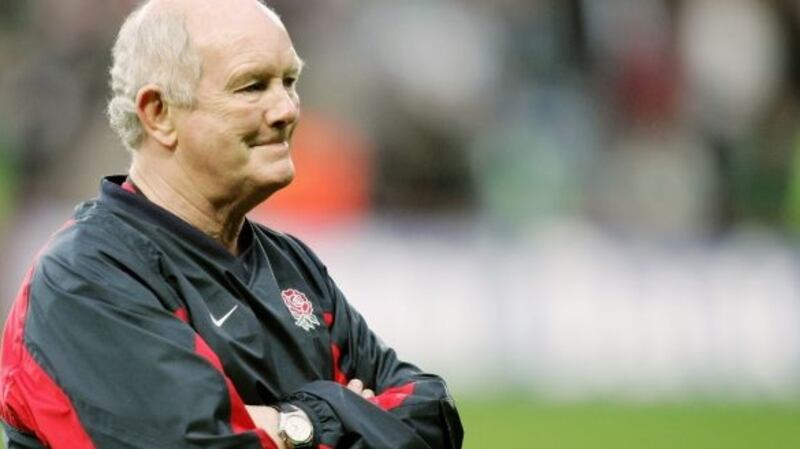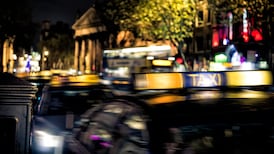“I don’t like this, Mam,” the wee boy said uneasily. He was about four years old and this was, most likely, his first St Patrick’s Day parade. It doesn’t really matter where: just know it was in the heart of the “rural economy” while at the same time only a stone’s throw from the Wild Atlantic Way.
Needless to say, it was raining buckets and it was raining that special Irish rain which doesn’t so much fall as just hang there all day, swirling about everything and everyone and saturating the world.
“But it’s our national day, love,” Mam told him brightly. “It’s who we are.”
The lad – or as Taoiseach Enda Kenny would describe him, “the future of Ireland” – considered this and took a good look around to see for himself who, exactly, we are.
He didn’t seem all that convinced. His mum had made an effort by kitting the entire family out in various shades of green. She herself wore a novelty green top hat whose roof was in danger of collapsing because of the gathering pool of water. She had green eye-shadow too which, unfortunately, had begun to streak down her face as if she was crying patriotic tears.
Occasional gusts of wind had made a shambles of the umbrella she was carrying while at the same time trying to zip one of those plastic windshield things over the pram of a toddler, who was blissfully asleep.
Platoons of youngsters, in and around the legal drinking age, marched by holding supermarket tinnies and flagons and Buckie and were caught up in the wink and elbow language of delight.
The footpath was completely jammers with soaking Irish people who had decided, en masse, that they weren’t going to allow “a drop of rain” prevent them from turning out to honour the patron saint.
Everyone wore green of some description and many came equipped with novelty shamrocks, bobbles, face paint, bow ties, clown shoes. The amusing leprechaun-beard count was heavy.
Sounded ominous
The older generation of St Patrick’s Day revellers – the guys who looked like your grandfather – suited up, shamrock on the lapel, Mass over, ready for a big day out, were thin on the ground.
Everyone smiled valiantly and wished each other a happy St Patrick’s Day. Some even ate ice-cream cones decorated in radioactive green syrup. The parade was still a few streets away but you could hear the drums and the pipes and in the rain it sounded ominous.
A Shane MacGowan ballad came scratchily from the open door of one of the pubs, all of which were doing belting business and had day security on all of the doors. It felt like eleven o’clock at night. Platoons of youngsters, in and around the legal drinking age, marched by holding supermarket tinnies and flagons and Buckie and were caught up in the wink and elbow language of delight.
The English rugby lads were schooled in an atrocity of which they knew nothing. They learned all about Bloody Sunday and the significance of Croke Park.
(Incidental note to the Taoiseach: that Dáil speech was probably the least appropriate reference to Inniskeen Road: July Evening of all time.) It was only gone noon but it felt like the drunkenness was general all over Ireland.
Soon the parade came: floats, fire engines, dragons, GAA teams, African Irish in ethnic dress, an absolutely drowned version of St Patrick himself and a magnificent papier-máché Setanta who was in grave danger of dissolving before our eyes; all drifting past us in a strange procession of “Ireland”.
This, then, was the vision of nationhood of which the four-year-old boy – and children across the land – were asked to make sense. And you could see it in his eyes, the truth that is still complex for us supposed adults: this is a deeply strange and incredibly damp little country.
Little wonder, then, that England finds it difficult to get a grip of Ireland, its boisterous, quarrelsome, poetic neighbours, when it comes to sport and to life in general. Tonight, at 5pm, the cream of England’s rugby team will attempt to run and bludgeon their way into the history books with 19 Test runs in a row. It is quite a moment. And it kind of had to be the Irish, there at the last, waiting to trip them up, contrary as ever.

Just this week, former England – and Ireland – coach Brian Ashton recalled England’s visit to Croke Park for that unique rugby match a decade ago. He was respectful and thoughtful and reading between the lines he was still a bit tripped out by the whole experience. How could he not be?
History lesson
It is hard not to think of that day without recalling David Strettle, the promising England winger whose career was cut short with injury. One minute, he thinks he’s playing in a Six Nations match: next he finds he’s playing in a living history lesson.
In the weeks before the game, the English rugby lads were schooled in an atrocity of which they knew nothing. They learned all about Bloody Sunday and the significance of Croke Park.
True, it happened long before their lifetimes: just after many of their forefathers fought in World War one and long before other relatives headed off for World War two. But they were under no illusion: allowing a rugby team, allowing an England rugby team at that, allowing them specifically, allowing God Save the Queen into Croke Park represented a huge act of generosity and friendship by Ireland in general.
This is a tricky one for England; a historic Grand Slam beckoning in Dublin on the day after the national day, when our Taoiseach doffs the cap at the White House and NYC turns green.
It would be an emotionally fraught day for Ireland, a symbol of forgiveness from the very nation which England had oppressed for 800 odd years. Oh, and good luck in the match, old chap.
The atmosphere that evening was powerful and spiked with an odd, misplaced sense of a wrong being righted. The Irish team rode that wave, played brilliantly and destroyed an English team which knew its role and moved like ghosts. It was England’s worst result in the history of the tournament. The better team won.
But even if England could have won, would they have felt as if they had the moral right to do so? In a way, their chances were sabotaged before they even got here. And say what you want about England, they were good sports about it. They said the right things then and continue to do so now.
Pride and passion
Ireland-England games have had that heavyweight collision ever since, the result swaying but always fiercely contested and the atmosphere thorny and thus a marketing dream in the slickly-packaged Six Nations tournament.
Once, Ireland teams visited Twickenham with a sense of absolute dread. Once, England teams came to Dublin knowing that the storm of Celtic fury would blow out after 20 minutes, by which time most of the Irish frontrow would be gasping for a fag. Nigel Starmer-Smith would pay due homage to Ireland’s pride and passion before settling in to describe the poetry in motion of Jerry Guscott and company.
No more. This is a tricky one for England; a historic Grand Slam beckoning in Dublin on the day after the national day, when our Taoiseach doffs the cap at the White House and NYC turns green.
Today, the shamrock is drowned for another year and all of Ireland is cloudy headed and green-streaked and bleary-eyed and still damp and ready, at last, to pour all of that emotion, all of that confusion about whatever it means to be Irish into the simple business of watching an Irish rugby team embark on another glorious chapter of beating the Auld Enemy in white – at their own game.
The more things change . . .












